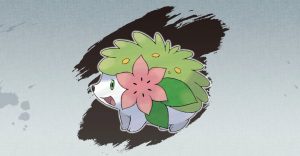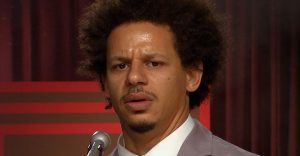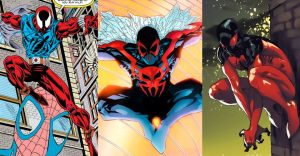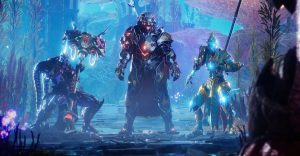The Shining: 10 Differences Between The Book And The Film
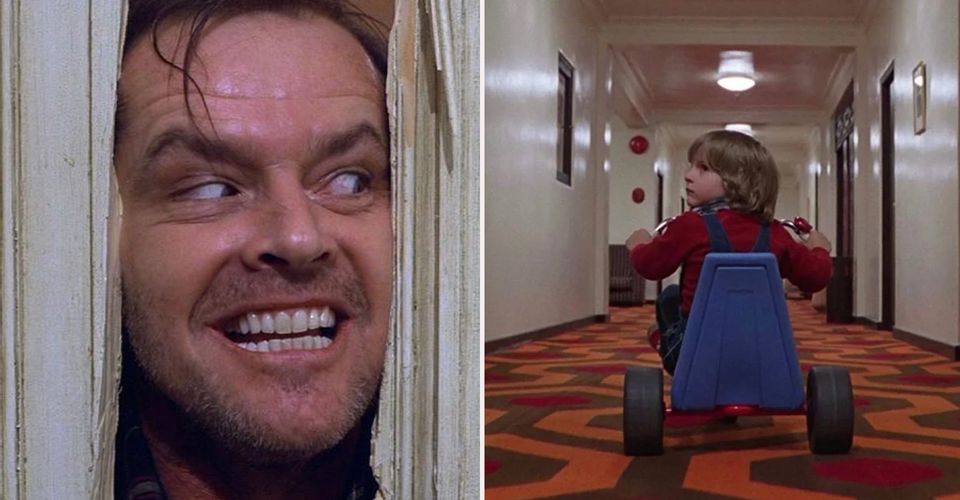
By now, we’re all well aware of how much Stephen King hates Stanley Kubrick’s version of The Shining. We’re all even more aware of how little sense this makes, considering it is one of the greatest films of all time and true work of cinematic mastery. King’s book may be scarier in essence, but Kubrick simply took it to another level.
One of the reasons King probably hates the film so much is because it left so much of his original material behind. We have collected ten of the biggest differences between the 1980 film, and the 1977 book.
10 The Hedge Maze

Owing to issues in budget and lack of technological advancement at the time, Stanley Kubrick decided to avoid one of the biggest set pieces from the book. Towards the end, we are shown the ghostly nature of the Overlook in full force when various topiary hedge animals come to life.
Kubrick didn’t think this could be animated well enough, so he opted to chuck a huge maze in the middle of the hotel grounds. It has become such an iconic part of the film and seems so important to the story that it almost seems strange that the book could exist without it.
9 We Never See The Twins

The Grady twins are arguably the scariest part of the film. They stand distantly down corridors as if waiting for Danny, hauntingly slurring out the same creepy words in unison: “Come play with us Danny, forever, and ever and ever…”.
Terrifying stuff. However, their presence is about as close to a jump scare as the films ever get, and that sort of thing just doesn’t work in a book. Stephen King explains their deaths, meaning they exist in the world created in the book, but we never see or hear them.
8 We Never See The Blood Lift

Another iconic scene designed to inflict fear into the viewer is the famous shot of blood pouring out of the lift. It has been parodied in everything from The Simpsons to Ready Player One and became synonymous with Kubrick’s version of The Shining.
Nothing even similar existed in the book, though, and if you think about it, how could it have anyway? The shot is cut to randomly throughout the film, with no sound playing. Why and how would King have it make any sense for occasional cutaways to a description of blood falling out of a lift to take place?
7 Room 237
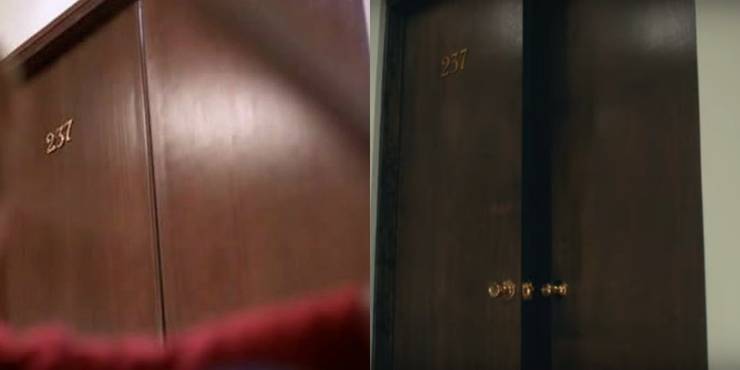
Room 237 is a point of tension across the entire film. Halloran warns Danny not to go there early on, then he does and things don’t exactly go well. Jack does the same, ending up cheating on Wendy with a naked ghost who ends up being a fair few years older and deader than she first appeared.
In the books, this was actually room 217, but the hotel in which the film was shot specifically requested that they use a room number that didn’t exist, to avoid putting customers off.
6 The Actual Cause

The Shining in film form makes a point to keep the cause of Jack’s madness under wraps. He is shown as an alcoholic who is bored and at a loose end in life, so maybe he is simply going insane with the ghosts there to take him under their wing when he does.
The book takes a totally different view of the situation and makes it very clear that seeing ghosts is what turns Jack crazy. King isn’t exactly known for subtlety, either, stopping the reader from making any of their own interpretations of what is happening by placing the hotel on an Indian burial ground. Classic.
5 Wendy’s Character

For the most part, Kubrick was able to take a fantastic story and great characters, weed out the weaker elements and create a mind-bending work of cinema. One of the stranger decisions he made that didn’t exactly work, was his recharacterization of Wendy.
In the film, she is a blubbering mess, overacting and flailing around the hotel pretty much non-stop for their entire stay in the Overlook. In the book, she is much cooler and calmer, even standing up to the Jack at one point. Why not just keep her character like that?
4 “All Work And No Play Make Jack A Dull Boy”

One of the most iconic lines from The Shining film comes when Wendy sees Jack has typed out “all work and no play make Jack a dull boy” on his typewriter.
This is another line from the film that has seen The Simpsons parody it (“all work and no play make Homer something something…”), but it didn’t come from the pen of Stephen King. This is 100% from the mind of Kubrick.
3 “Here’s Johnny!”

Another iconic line from the film is not one that Stephen King invented. Perhaps this is why he hates the film so much. After all, pretty much all of its most iconic moments didn’t actually exist in his book…
While Jack does chase Wendy through the hotel, we never get that incredible moment where Jack Nicholson pokes his face through the door and says, “here’s Johnny!”. It makes no sense, but it just gives off such an unfathomably creepy feeling of insanity and aggression. It wasn’t even in the script, that was just Nicholson pulling off some incredible improvisation.
2 Halloran’s Fate

You’d think someone with The Shining might be able to just look to the future and see that he was about to be smashed in the back with an ax.
In the film, he obviously misses the memo and is killed within about two seconds of arriving back at the hotel. In the book, he doesn’t actually die, even though the topiary animals and Jack both injure him pretty severely.
1 The Ending

It might be the ending that has the biggest difference between the book and the film. In the film, one of the final shots is Jack Torrance having frozen to death in the maze, and the final shot is a close up of a picture that shows Jack as the caretaker from all those years ago.
The book ends with Jack dying in an explosion, and rather than showing the picture, we get a whole epilogue. Jack and Wendy are recovering, Halloran is a chef, and it is implied that the ghost/memory of Jack is caring for Danny from beyond the grave.












